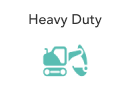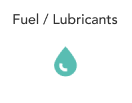eveeWRITTEN BY: MATTHEW MCVITTY – CATALYST AGEING CONSULTANT, CATAGEN
INTRODUCTION:
In the fast-paced world of automotive manufacturing, innovation is key to staying ahead of the curve. Original Equipment Manufacturers (OEMs) constantly seek new ways to optimise their processes, improve product quality, and meet evolving customer demands. One area where OEMs are increasingly finding value, is in repurposing their test cells for high-value activities that speed up development time.
Traditionally, test cells at OEMs or Tier 1 Suppliers have been primarily used for catalyst durability testing. While this remains an important aspect of ensuring compliance with emissions regulations, OEMs are discovering that these highly specialised facilities can be adapted for a range of other activities with higher value in the development process of new vehicles.
Expanding Horizons: Beyond Catalyst Durability Testing?
Engine Testing:
One of the most significant applications for test cells is engine testing. As automotive technology advances, OEMs are continually developing new engine designs and technologies to improve fuel efficiency, performance, and emissions. Test cells provide a controlled environment for engineers to conduct rigorous testing on prototype engines, assessing factors such as power output, emissions levels, and durability under various operating conditions.
By using test cells for engine testing at optimal operating conditions, OEMs can accelerate the development cycle, identify potential issues early in the design process, and refine performance parameters more efficiently. This proactive approach ultimately leads to faster time-to-market for new vehicle models and ensures that engines meet the highest standards of quality and reliability.
Alternative Mobility Testing – Electric Vehicles (EVs) & Hydrogen (H2):
With the growing shift towards EVs, hybrid technology, and the emergence of hydrogen fuel cell vehicles (FCVs) & H2 Internal Combustion Engines (ICE), OEMs are investing heavily in the development of comprehensive alternative mobility solutions.
From assessing battery performance and lifespan to optimising regenerative braking systems and validating the performance of hydrogen fuel cell stacks or hydrogen ICE, test cells provide invaluable insights into the behaviour and efficiency of both electric and hydrogen propulsion systems. By repurposing existing facilities for comprehensive e-mobility and hydrogen testing, OEMs can streamline the development process, mitigate risks, and accelerate the adoption of sustainable transportation solutions across a diverse range of technologies and applications.
Maximising Resources and Efficiency
Repurposing test cells for activities such as engine testing and e-mobility testing allows OEMs to maximise the utilisation of existing resources and infrastructure. Rather than investing in entirely new facilities, they can leverage the capabilities of their test cells to support a broader range of Research & Development initiatives.
In today’s rapidly evolving automotive industry, adaptability is crucial for success. By repurposing their test cells for activities beyond catalyst durability testing, OEMs can unlock new opportunities for innovation, efficiency gains, and competitive advantage.
Importance of Catalyst Durability Testing Remains
While repurposing test cells for engine testing and e-mobility research opens up new avenues for innovation, it’s crucial not to overlook the importance of catalyst durability testing. Catalysts play a vital role in reducing harmful emissions from vehicles, ensuring compliance with stringent environmental regulations. Conducting thorough durability testing on catalytic converters is essential to validate their performance over the vehicle’s lifespan.
Outsourcing catalyst durability testing to specialised facilities allows OEMs to maintain a focus on their core areas of expertise, such as engine development and e-mobility solutions. By partnering with experienced testing providers, OEMs can ensure that catalysts meet the highest standards of durability and efficiency without diverting resources from other critical research and development initiatives. This strategic approach enables OEMs to optimise their testing processes, reduce time-to-market for new vehicle models, and enhance overall product quality while leveraging the expertise of industry specialists in emissions control and catalytic converter technology.
Why Partner with CATAGEN

MORE CONTENT















